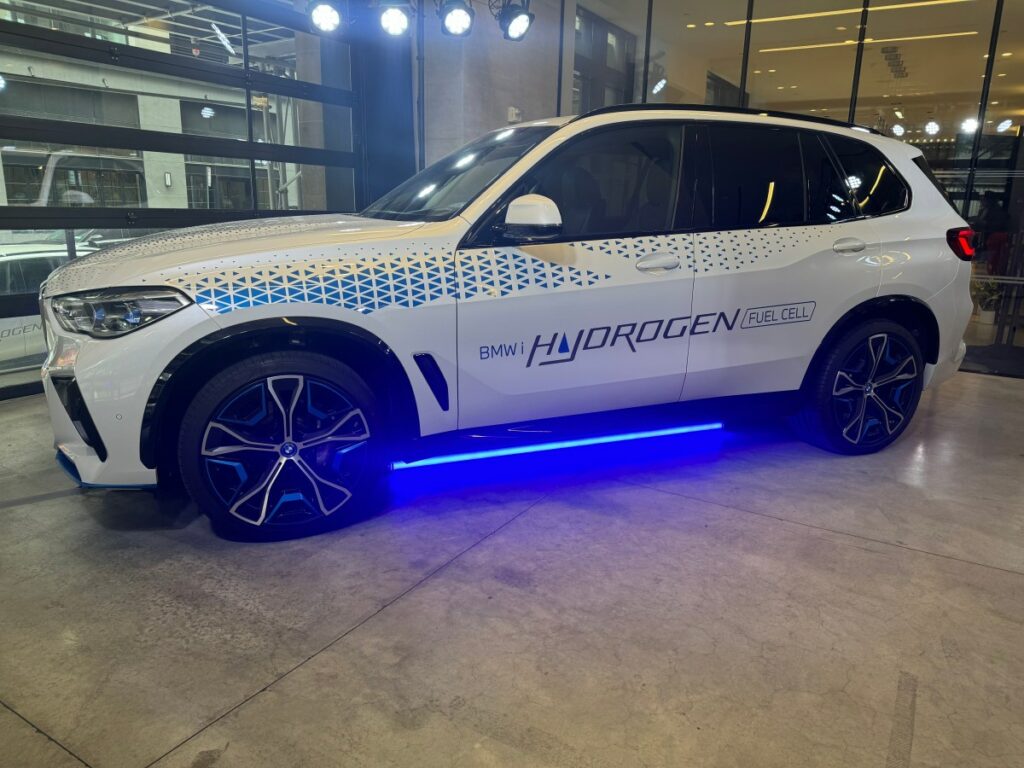Funding for green hydrogen startups — particularly at the growth stage — has dipped. Hydrogen plants and fueling stations across the U.S. have shut down. And automakers and governments seem to be on the battery electric vehicle (BEV) buzz.
And yet, BMW recently announced plans to work with Toyota to develop a hydrogen fuel-cell consumer car for series production in 2028.
Despite hydrogen’s challenges, BMW thinks the only way to actually achieve a shift to zero-emissions transportation is through a mix of BEVs and hydrogen vehicles. And it’s a view that other industry experts share.
Juergen Guldner, general project manager of BMW’s hydrogen technology and vehicle projects, told TechCrunch that he (and his employer) think hydrogen vehicles can complement the growing market of BEVs by addressing the needs of customers who can’t or don’t want to have to charge their car like a phone.
Hydrogen vehicles could offer a “best of both worlds” scenario, where you get the benefits of electric driving with the convenience of refueling like traditional gasoline cars, Guldner said while speaking at a BMW event during Climate Week NYC.
“If you want to change the behavior of people, then offering choice is always the better way forward, versus just taking something away and saying, ‘This is the solution. You’ve got to live with it from now on,’” Guldner said.
Jason Munster, principal and founder of hydrogen consulting firm CleanEpic, added that a mix of BEV and hydrogen fuel cell vehicles is also more cost effective and sustainable. “The thing about battery electric vehicles is that the more you put on the grid, the more the marginal cost goes up,” Munster told TechCrunch. “Right now in a lot of places, there’s excess grid capacity, so you can add fast chargers to the grid.”
Still, the challenges are substantial.
There is the cost to build out hydrogen infrastructure, which is much less developed than its battery electric counterpart. Hydrogen would need to be made using renewables, rather than fossil fuels, to be able to make that zero emissions claim. Both Munster and Guldner argue it’s possible if the whole ecosystem is taken into account.
“You can’t just have [hydrogen] fueling stations and vehicle companies working together,” Munster said, speaking about what went wrong with the rollout of Toyota’s hydrogen vehicle, the Mirai, in California. The state has the highest quantity of hydrogen stations in the country, but they weren’t plentiful enough for most Mirai owners to refuel with ease.
“Without all parts of the chain — the production, distribution, and end use — having skin in the game together with contracts that actually have teeth for penalties, you aren’t able to replicate the success that battery electric has had,” Munster said.
Guldner said BMW is working on building out such an ecosystem, in part by trying to drive demand through potential partnerships with commercial fleet customers. BMW has been testing a pilot fleet of hydrogen vehicles in more than 20 countries over the past 20 months and has received positive feedback so far, Guldner says.
The automaker is also working with UrbanX, a tech startup platform and VC firm by Mini, to find companies that can fit into the hydrogen equation.
The case against the VC model
Munster said that ultimately, the VC model is not well suited for hydrogen projects because of the long-term payback and the large capital requirements involved.
The Biden administration’s Inflation Reduction Act (IRA), which was signed into law in August 2022, includes tax credits for clean hydrogen production. But two years later, a lack of clarity on guidance is “holding back the entire hydrogen industry” from experiencing the type of boom that the battery industry has seen, Munster said.
He said the initial guidance for IRA hydrogen funding is “contentious,” “limiting,” and “not finalized.” The “three pillars” of the IRA hydrogen tax credit are incrementality, temporal matching, and deliverability. In other words, the goal is to ensure that hydrogen production truly results in reduced emissions by requiring new, dedicated renewable energy to power the electrolysis process (the separation of hydrogen and oxygen molecules to produce hydrogen).
The strictness of those three pillars makes it difficult for companies to qualify for subsidies. Munster has suggested more relaxed rules that allow for fossil fuels from the grid to power existing electrolyzers (the apparatus that performs electrolysis) in the short-term until a more robust renewables ecosystem is developed.
The total amount of the subsidy is also unknown — it could be anywhere from $30 billion to $300 billion.
“Everyone is really paused around their expansion plans based upon how big this subsidy ends up being,” Munster said.


